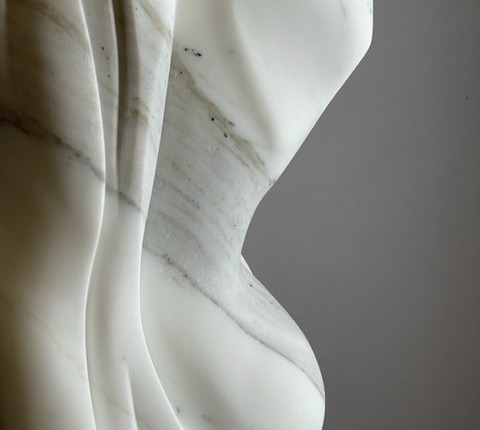Marble grabbed my attention as a sculptor early on. Prized and adored by all the world’s greatest sculptors throughout history, it seemed to be the ultimate medium to work with. As I was beginning my journey as a sculptor eleven years ago I began with sandstone and alabaster, which are considered “soft” stones. Familiarizing myself with the tools and properties of stone with a much gentler medium made it easy for me to quickly fall in love with the art of stone carving. From my childhood, experiencing the grand sculptures at the Museum of the Art Institute of Chicago, to my trips to Greece to visit the ancient ruins, I recognized that it was marble that was used to make so many things that inspired me and celebrated Beauty. It seemed to pulse in my veins and so I knew that I had to prepare myself for the challenge of carving marble.
There are many varieties of marble with variable consistencies and on the MOH scale of hardness with soapstone at 1 and diamond at 10, marble runs between 3 and 4. Onyx and calcite come in at 4 and granite at a 6, making marble the perfect carving stone for use with a wide array of chisels and the capability of taking a fine edge. I remember my first piece of marble and how shocked I was at its hardness compared to alabaster. How could a point or two on the MOH scale make such a huge difference? Well, it does and the experience of carving it is very different as well. But I worked at it diligently and when it came time to sand and polish, the stone’s beauty came to life before my eyes. I was hooked!
My ancient Greek ancestors knew that there was something very special about this particular stone that began its ubiquitous use in architecture and statuary for millennia. Marble comes from the Greek word μάρμαρο which means to sparkle or glisten. I can easily see why they chose that name for this enduringly beautiful medium.



